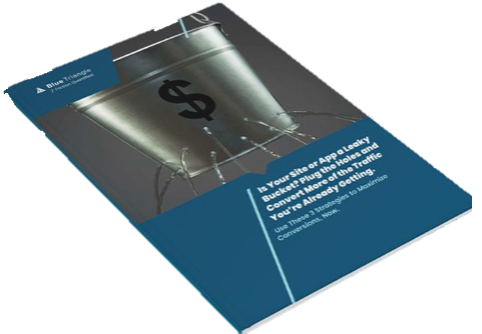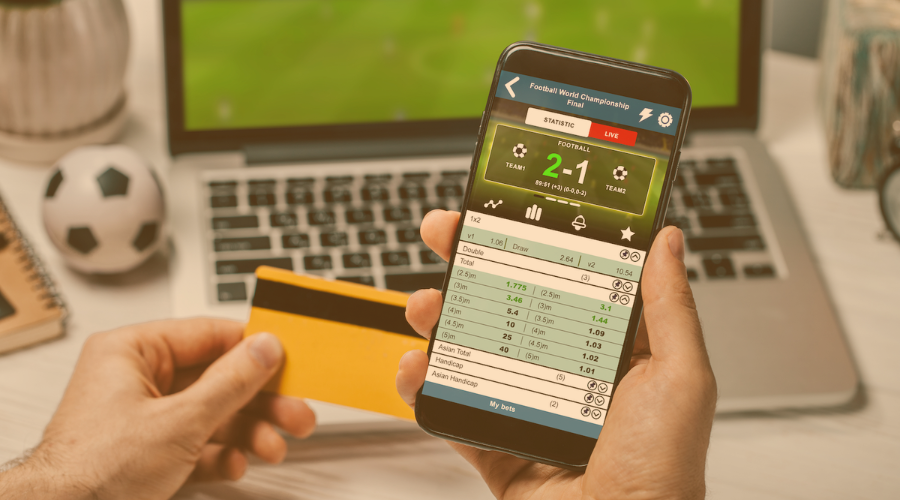Phygital Considerations That Challenge Couch Potatoes: We've talked often on the podcast about when digital experiences cross over to physical experiences; typically, we're talking about people buying online and picking up in-store. But Scott noted other phygital challenges they observed at FanDuel, such as when customers must take a photo of their driver's license to register to play.
It presents the sort of friction that can prevent a customer from completing a transaction, whether sports betting or making a purchase.
"How many times are you making a purchase on your mobile phone and you're laying on the couch, and you're like, well, my wallet's in the other room," Scott notes. "Never mind, I'll do it another day."
Competing Distractions for the Consumer's Attention. When consumers transact with your brand using their smartphone, their attention can be stolen with every ding, chirp, and ring.
Another guest on an episode of The Frictionless Experience, Jason Abdo, talked about his experiences as a product manager for children's clothing brand Osh Kosh B'Gosh.
"Imagine you're shopping on the website, and you get a call. I've now disrupted that experience," Jason explains. "You get a Facebook message, a text message, etc. So we are not only fighting our competitors on mobile, we are fighting every other app that you have notifications turned on."
6 Tips for Creating Great Mobile Experiences
Understanding the unique challenges mobile devices introduce for digital product teams, consider these tips from Scott for creating frictionless mobile experiences:
1. Strive for consistency regardless of the device.
Users should have similar experiences from your brand regardless of the device they are engaging with. Scott noted that this was a particular challenge for FanDuel since they operate multiple apps and brands, and consumers must complete portions of the experience on mobile devices, even if they start their journey on a computer.
"I want my customers to get one look and feel coming into my brand," Scott suggests. "And when you enter that brand, then that's the experience that you're expecting. And through that experience, I could either lead into the Daily Fantasy Sports journey, or I could lead into the sports betting or the casino experience."
For legal reasons, while consumers can learn about and create an account on any device, they can only place bets on a smartphone today. That means the digital team must ensure messaging is clear and experiences are united.
"The web experience could be a whole lot different than what the app experiences were, but they were going to influence and complement what the apps could bring to the table," Scott explains.
2. Don't assume you need to create a mobile app.
Thanks to Apple's ad campaign with the famous line, "There's an app for that!" many brands feel they must create their own app.
But apps must be distributed through app stores, are challenging to keep updated, and require consumers to download the app before transacting with your company. The reality is precious phone real estate has to be earned, and consumers aren't likely to download your app if they purchase infrequently from your brand or simply want to make an impulse purchase.
"Too many times, that's the first answer because that's what the executives know. We need to build an app," Scott explains, imitating the voice of a typical executive.
"What a product manager should then ask is,' Why do you think we need an app for that?' What's the problem you're trying to solve? Is it trying to get them to do a simple task? Well, you can do that very simply with a well-thought-out mobile web experience."
Scott suggests that with the advent of progressive web applications and 5G speeds widely available today, "you can load a pretty magical mobile web experience today. And you can still do Face ID, you can still do Apple Pay, you can still do a lot of the things that you can do in an app. You can still make it easy for people to log in to personalize the experience."
3. Understand that app audiences are different from web audiences.
Brands that do build their own app often mistake correlation and causation. "One of the correlations that I see people get wrong all the time is they say, yeah, our conversion rate is so much better in the app," Nick noted in our conversation.
"They're fundamentally missing that they've developed a highly loyal customer that downloaded the app. And that's why they are converting better. That's what's the correlation. It has nothing to do with app versus mobile web."
Subscribe and watch more clips of The Frictionless Experience on YouTube.
His point is that focusing attention on the app experience prioritizes your most loyal customers, those who will make an effort to download and use your mobile app. But not every customer is that loyal, and many loyal customers may prefer to transact using the computer. Therefore, the goal should be to create enjoyable, frictionless digital experiences for all customers, adapted to the device they prefer to use.
4. Recognize that mobile experiences can influence more than mobile purchases.
Scott discussed the misconception that purchases are siloed and don't cross over to or influence channels. It was a point he first noticed when working on mobile experiences for Verizon, who was a client of his when he worked for a digital agency.
Scott explains:
-1.png?width=940&height=788&name=Friction%20Show%20call-out%20-%20Pull%20Quote%20(1)-1.png)
5. Consider building first for mobile.
The smartphone's small form factor is far more restrictive than a laptop or desktop monitor. Shawn Sheely suggests that teams start by building the digital experience for the smaller screen. His team took this approach at US Bank, designing a great mobile app experience before designing the web experience.
Doing so helped them recognize and repeat "experience patterns" that work across screens. "Because you've done this over and over again if I'm going to collect your name and address; I've done that a million times, right?" Shawn explains. "So, it really drove us towards simplicity. And, of course, simple design is beautiful, and functional design is helpful."
6. Stitch sessions across screens together to understand the customer journey.
When consumers can glide effortlessly across web, mobile web, and mobile app experiences, it's critical that the analytics software you use can stitch those sessions together. Consumers often appear to be different people due to unique device and session IDs generated by each device and browser, and that can confuse understanding of what's happening.
Tools unable to reconcile the consumer into a single person and combine what appear to be separate sessions could cause you to under or overestimate conversion rates and interpret drop-off rates incorrectly.
But by integrating between our SDK and web tag, Blue Triangle has been able to solve this challenge and enable customer journeys to be stitched together into a single journey across any screens.
Focus on Creating Frictionless Digital Mobile Experiences
It's clear that with consumers preferring mobile devices, especially the youngest generation that will make up a growing percentage of brands' customers in the future, digital teams need to focus on creating frictionless digital mobile experiences. Beginning with these six tips for approaching it with your UX and development teams is a good start.
.jpg)





